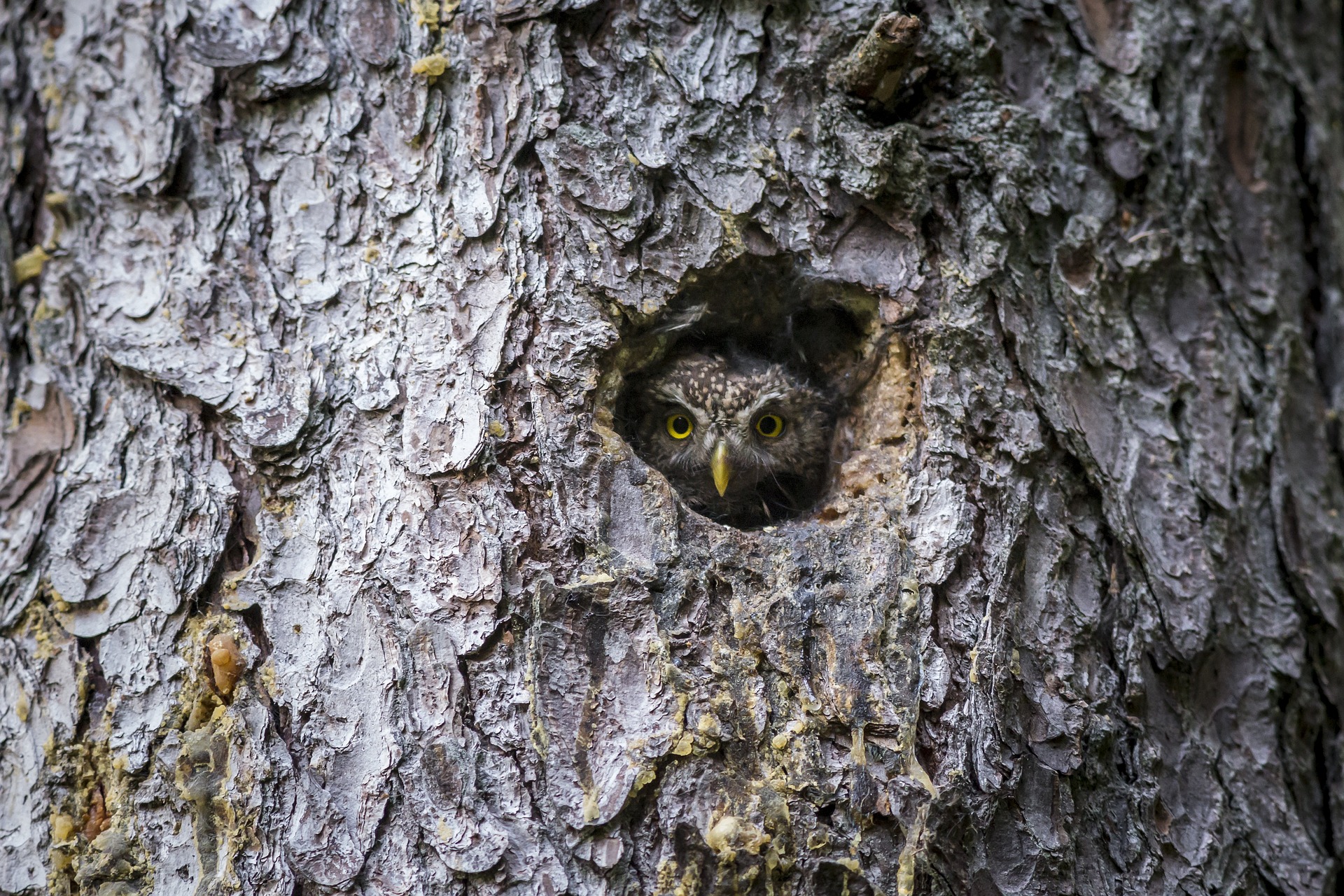Here’s a complete scientific and natural history overview of the Eurasian Pygmy Owl (Glaucidium passerinum), Europe’s smallest owl — a fierce little predator with remarkable hunting skills and an endearing appearance.
🦉 Eurasian Pygmy Owl (Glaucidium passerinum)
Taxonomy
- Kingdom: Animalia
- Phylum: Chordata
- Class: Aves
- Order: Strigiformes
- Family: Strigidae (Typical owls)
- Genus: Glaucidium
- Species: G. passerinum
Common Names
- Eurasian Pygmy Owl
- Pygmy Owl
- Passerine Owl (older name referring to its small size)
General Description
The Eurasian Pygmy Owl is the smallest owl species in Europe, standing only about the size of a sparrow — yet it is a powerful and bold hunter. Despite its tiny size, it regularly preys on birds almost as large as itself.
- Length: 15–19 cm
- Wingspan: 30–39 cm
- Weight: 50–75 g
- Plumage:
- Upperparts are brown with fine white spots.
- Underparts are white with brown streaks.
- Tail short and barred with light and dark bands.
- Head: Rounded, with no ear tufts.
- Eyes: Large, yellow; face disk plain and unmarked.
- The species has a stern expression, giving it an alert and intelligent look.
Distribution
The Eurasian Pygmy Owl occurs throughout northern and mountainous regions of Europe and Asia, including:
- Northern Europe: Scandinavia, the Baltic States, northern Poland, and Russia.
- Central Europe: The Alps, Carpathians, and parts of Germany, Czechia, and Austria.
- Eastern Europe and Siberia: Extends across Russia to eastern Siberia.
- Habitat altitude: From lowlands in the north to mountain forests up to 2,000 m in the south.
Habitat
- Prefers coniferous and mixed forests with plenty of old trees for nesting.
- Especially common in spruce and fir forests with clearings and forest edges.
- In winter, sometimes seen near forest edges or rural gardens when hunting small birds.
- Avoids dense, dark forest interiors and open plains.
Behavior
- Active by day and twilight (crepuscular) — unlike most owls, it hunts often during daylight, especially at dawn and dusk.
- Solitary and territorial, defending its range through vocal calls.
- Males occupy territories up to 40–60 hectares in size.
- Often stores prey (“caches”) in tree holes or crevices during autumn for later use in winter.
Diet
A true miniature hunter with the diet of a much larger owl.
- Primary prey: Small birds (tits, finches, sparrows).
- Also eats small mammals such as voles, shrews, and mice.
- Occasionally takes large insects or reptiles.
- Hunting method: From a perch, the owl swoops silently onto prey, often decapitating birds before storing them.
Breeding
- Breeding season: March–June.
- Nest site: Old woodpecker holes, especially those made by the Great Spotted Woodpecker.
- Clutch size: 4–7 eggs.
- Incubation: 28–30 days (by the female only).
- Fledging: Young leave the nest after about 30–35 days.
- Parental care: Male provides food for both female and chicks during incubation.
Calls and Vocalizations
- The male’s song is a series of clear, fluting whistles, often heard in early morning or evening: “Piu… piu… piu…”
- Calls carry far through quiet forests and are a key way to locate the species.
- Alarm calls include higher-pitched “chirr” notes and trills.
Conservation Status
- IUCN Red List: 🟩 Least Concern
- Population trend: Stable or increasing in many regions.
- Threats:
- Deforestation and loss of old-growth nesting trees.
- Habitat fragmentation.
- Conservation programs encourage leaving old trees and installing nest boxes.
Identification Tips
| Feature | Eurasian Pygmy Owl | Similar Species |
|---|---|---|
| Size | Very small (sparrow-sized) | All other owls are larger |
| Head | Round, no ear tufts | Boreal Owl has large, squarish head |
| Activity | Diurnal (hunts by day) | Most owls are nocturnal |
| Call | Repetitive high whistles | Tengmalm’s Owl has a more musical call |
Ecological Role
- Helps control small bird and rodent populations in forests.
- Prey caches provide food for other predators and scavengers.
- Acts as a bioindicator species for old, healthy forest ecosystems.
Interesting Facts
- Despite its size, it can kill prey larger than itself, including thrushes.
- Males often store up to 100 prey items in autumn to survive harsh winters.
- May use the same nesting hole for several years.
- In Scandinavian folklore, its call was once thought to predict death or misfortune, due to its haunting whistle in quiet forests.
- In reality, hearing it often indicates a thriving, biodiverse forest.
Range in Estonia and Northern Europe
In Estonia, the Eurasian Pygmy Owl is a resident species, most often found in:
- Mature spruce and pine forests.
- Regions with a mosaic of openings, clearings, and nesting holes.
- Calls are most frequently heard in March–April, during early mornings and evenings.
Visited 12 times, 1 visit(s) today
Views: 164
Subscribe to the newsletter:
